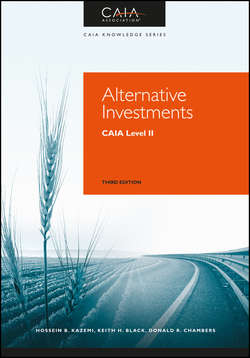Читать книгу Alternative Investments - Black Keith H. - Страница 29
На сайте Литреса книга снята с продажи.
Part 1
Asset Allocation and Institutional Investors
CHAPTER 1
Asset Allocation Processes and the Mean-Variance Model
1.8 Implementation
1.8.5 Hurdle Rate for Mean-Variance Optimization
ОглавлениеAn interesting implication of mean-variance portfolio optimization when there is a riskless asset is that the benefits of diversification can be shown to cause low-return assets to be desirable for inclusion in a portfolio. It is easy to show that the addition of a new asset to an already optimal portfolio will improve its risk-return properties (i.e., increases the expected utility) if the expected rate of return on this new asset exceeds a hurdle rate. The hurdle rate is an expected rate of return that a new asset must offer to be included in an already optimal portfolio. An asset being considered for addition to a portfolio should be included in the portfolio when the following expression is satisfied:
(1.21)
Here, E[RNew] is the expected rate of return on the new asset, E[Rp] is the expected rate of return on the optimal portfolio, Rf is the riskless rate, and βNew is the beta of the new asset with respect to the optimal portfolio.7
Equation 1.21 states that the addition of the new asset to an optimal portfolio will improve the risk-return properties of the portfolio if the expected excess rate of return on the new asset exceeds the expected excess rate of return on the optimal portfolio times the beta of the new asset. If the new asset satisfies Equation 1.21, then its addition to the optimal portfolio will move the efficient frontier in the northwest direction. For example, if the beta of the new asset is zero, then the new asset will improve the optimal portfolio as long as its expected rate of return exceeds the riskless rate. If the new asset has a negative beta, then it could improve the optimal portfolio even if its expected rate of return is negative. In other words, assets that can serve as hedging instruments could have negative expected returns and still improve the performance of a portfolio.
APPLICATION 1.8.5
Suppose that an investor is using mean-variance optimization, the expected annual rate of return of an optimal portfolio is 16 %, and the riskless rate is 1 % per year. What is the hurdle rate for a new asset that has a beta of 0.5 with respect to the optimal portfolio?
Given the formula of Equation 1.21, the hurdle rate would be:
What if the new asset has a beta of –0.3, which means that it can hedge some of the portfolio's risk?
In this case, even if the new asset is expected to lose some money (i.e., less than 3.5 %), its addition to the optimal portfolio could still improve its risk-return properties.
7
From linear regression and the CAPM we know that βNew = Cov[RP, RNew]/Var[Rp].
